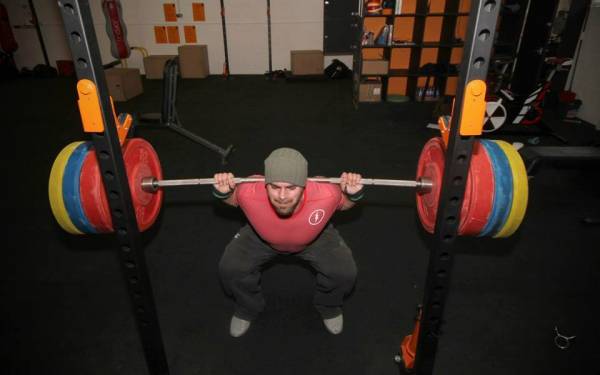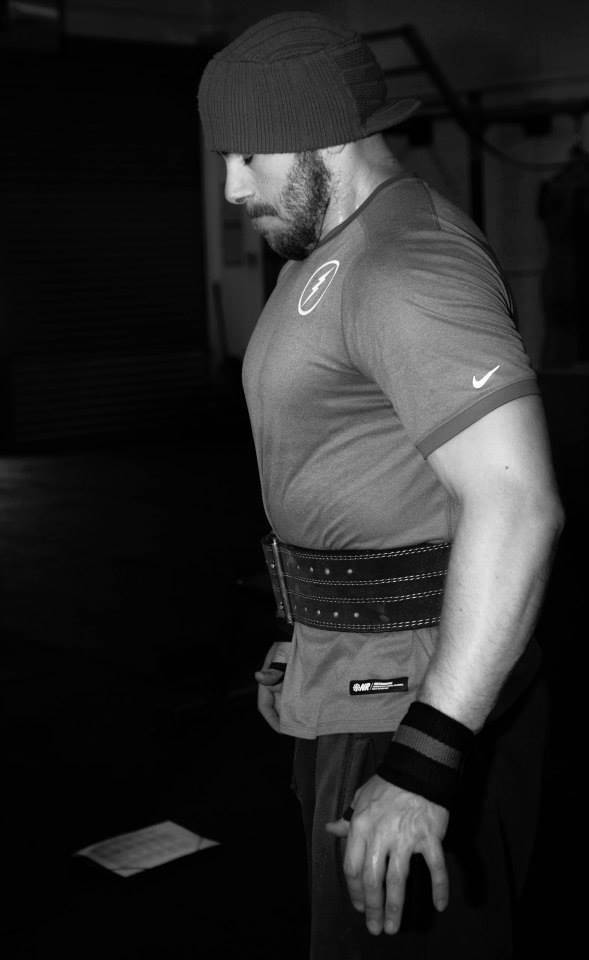If I saw William Wayland walking towards me in BJJ class and we were the only two people left not rolling, I would most likely fake an injury or pretend to be sleeping.
If I saw William Wayland walking towards me in BJJ class and we were the only two people left not rolling, I would most likely fake an injury or pretend to be sleeping.
Looking at photos of Wayland, I would never have guessed he wasn’t into sports growing up. Sometimes referred to as “the most boring sport in the world to watch other than golf,” soccer was the dominant sport in the United Kingdom when William was a child and he wanted nothing to do with it. Martial arts caught his attention, though, and eventually led him to his current role as a coach:
“I dabbled in judo, kung fu, and taekwondo. It was on a talented athlete scholarship scheme for taekwondo when I was first introduced to proper strength and conditioning coaching by Dr. Peter Olsen at Teesside University. Aside from monkeying about with machines and bodyweight training, I had not really done any proper strength and conditioning before then. Taekwondo not working out in the long term, I wanted to make a career out of helping other athletes achieve their potential. This was nearly a decade ago, strength and conditioning was pretty much unheard of in the U.K. and hardly talked about in sports science circles. I currently coach at Mi-Gym in Chelmsford in the U.K.”
William contributes regularly to Scramble Blog for strength and conditioning as well as his own blog, Powering Through. His guidance has been sought from athletes of all fitness levels including UFC Middleweight Luke Barnatt.
Like a lot of people who train BJJ, William was referred to the sport through other arts:
“I first heard of BJJ from my taekwondo instructor who did some MMA. I did some submission wrestling, but it wasn’t until I was living in Korea that I started doing BJJ. I remember nervously turning up to Machado Gwangju, a dumb waygook foreigner and getting a lesson in the gentle art from guys half my size. Korean BJJ made up for lack of knowledgeable instructors with constant rehearsal of the basics and crazy work ethic. I moved back to the U.K. to teach sports science and found myself knocking on the door of BKK Fighters, where I train with Gracie Barra Essex and their instructors Lee Catling and Steve Wright.”
William and I recently did an interview by email and reading his answers to my questions cracked me up.
In learning about William’s work, my vocabulary has certainly been broadened and now includes terms like “fuckaboutitis” (explained in his interview with Brendan Hufford), at which I have experience, and “jiggery pokery,” which I know nothing about because I’m a nice girl.

A lot of people, including me, have developed training routines that include exercises mimicking BJJ movements. I’ve found these routines have helped build strength, but are they ideal?
I’m not so sure anymore. When I asked William whether he thought functional exercises were the optimal choice for building strength for combat sports, he replied:
“A loaded question! Functional training as I see it is anything that gets a favorable response from the athlete. People forget that strength and conditioning is simply the application of stress. Some people, however, consider functional training to be the antithesis of training for form, also known as bodybuilding. This is understandable as the media presents the bodybuilder to the layperson as an example of strength. So they swing the opposite way, away from heavy lifting, which is usually what most need to be doing. So they start dabbling in abstraction, Swiss ball humping, kettlebell juggling, open guard 45lb barbell jiggery pokery. Basically mimicking what they do on the mat in the gym. When what they need to do is load a bar and build those basic measurable movement patterns, the squat, hinge, push, and pull. For most this will have a better effect than anything else.”
A full explanation of why it’s best to avoid jiggery pokery when improving strength and conditioning for BJJ is provided in William’s article, How BJJ was Nearly Hijacked by the Functional Fitness Approach.
Another foolish notion, in William’s opinion, is training without a plan. In his article, Workable Periodization for MMA, he suggests periodization planning specific to each athlete’s current condition and his or her goals. Wayland has a plan if he ever trains for Worlds:
- Do a lot more BJJ.
- “I would have to switch to a whole load of high force, high velocity type work and specific strength: plenty of hip thrusts, staggered stance lifts and holds. I really like Zercher good mornings and other exercises that load you anteriorly for grapplers. We use a combo exercise, affectionately known as the rump wrecker, which is a Zercher squat followed by Zercher good morning. I would probably have to do some match specific conditioning. I’m keen on athletes getting work capacity from playing the sport with some supplementary training for energy systems. But when it competition time we implement a lot of technique under fatigue (TUF) conditioning, which is metabolically demanding work interspersed with basic technical work.”

Equally important is recovery, according to Wayland:
“Recovery starts as soon as training ends; we use a number of exercises and methods to jump start recovery such as laying wall shakes, band distraction, nutrition, massage, recovery baths and my personal favourite deep breathing drills. Deep belly breathing helps you shift from sympathetic nervous system dominance, induced by training to parasympathetic dominance. Learning how to go from an excited state to a relaxed one can really help. Ever had a super intense BJJ session in the evening and then try and get to sleep? And for whatever reason you can’t sleep, your skin is crawling; heart beat in the ears, sound famiiar? Sympathetic nervous system is still in action mode! We need to calm it back down again.”
If you’re a regular reader of Breaking Muscle, you aren’t among those who continue to buy every bit of fitness foolishness being sold on late night infomercials. Still, it can be hard to find someone in real life with legitimate coaching skills. William advises you to continue doing research:
“Get informed, not all training is equal. There are ton of people out there willing to sell you easy answers. They’ll appeal to your ego and pull you in with fluffy fitness sentiment or programs wrapped in pseudo methodologies, when often there is no clear methodology to be found at all. It’s sad to see people hand over huge sums of money to spend time with these people. Get with someone with a track record of athletic improvement. In a decade we went from no strength and conditioning coaches to every erstwhile PT now being a S&C coach or an MMA fitness coach. Fitness consumers occasionally need to be more Socratic about their training, chase purposeful training not buzz words or something that looks cool with a hashtag.” (#waylandknows)
If you live near North Essex, you are lucky and can possibly work with William. If not, online programming is also available. Get in touch with William on Twitter or Facebook.
Until next time, keep training and stay alpha!
Photos courtesy of William Wayland.






